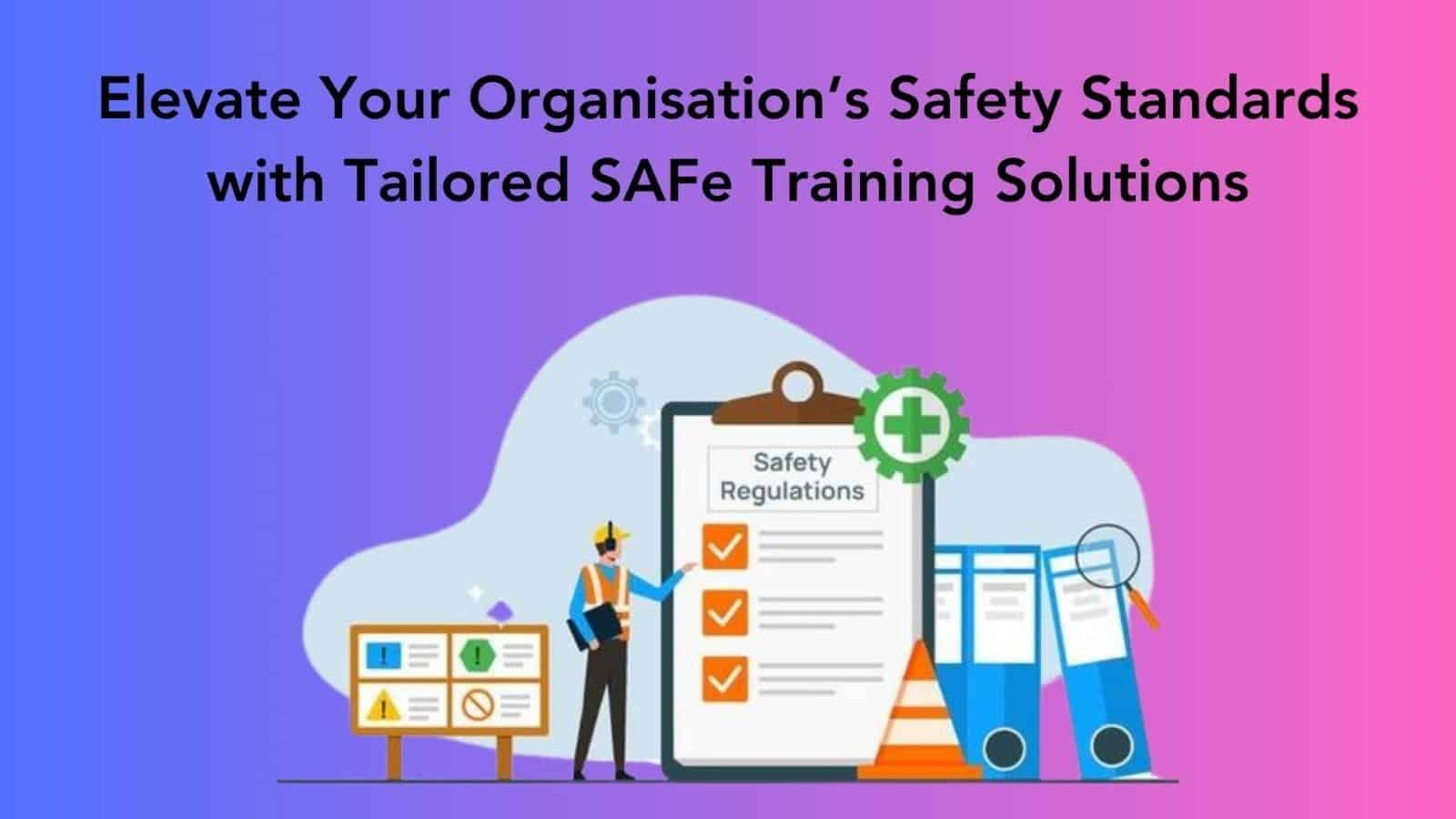Elevate Your Organisation’s Safety Standards with Tailored SAFe Training Solutions
In today’s organisations, in a fast-changing business environment, safety standards for employees are more and more important. The rise of the Leading SAFe Certification and the different Levels of Scaled Agile Framework implementation by companies are meant to facilitate safety upgrades through the use of top-notch SAFE training programs. This blog will explore how organisations can assist in the attainment of high standards of safety through the incorporation of specialised training programs (SAFe) that are in line with the SAFe principles.
Understanding Leading Safe Certification
The Leader Safe License is a crucial tool in the implementation of agile methods, specifically within the Scaled Agile Framework (SAFe). It turns experts into leaders who successfully administer agile transitions with high success from within the business. The certification process contains various stages that stress the competence of the SAFe principles, approaches, and roles through fundamental training and examinations.
Critically, Safe Certification aims at evolving a safety culture related to both physical and psychological well-being. Authorised leaders go about their business by instilling safety awareness, which then triggers creativity and cooperation among team members. Also, the certification is to be applied in real life, and that way, one will be able to handle organisational concerns efficiently.
The Significance of Safety in Agile Environments
Safety is a core requirement of any Agile process, ensuring both physical and psychological protection of the employees. Physical safety, like hazard exploration, human engineering, and accident prevention in coordinated work. Psychological security generates trust, comfortable communication, and avoidance of sanctions, the basis of teamwork and innovation. In fact, risk management limits the risks that end up being threatening in the long run; thus, adaptability and project success are guaranteed.
Quality assurance methods are responsible for the product’s integrity and reliability, which means the client’s safety and satisfaction can be determined. Pursuing continuous improvement leads to a learning culture that allows employees to iteratively adjust practices. Safety issues in Agile systems, at first, are about protecting individuals and, in the end, contributing to the success of organisations.
Benefits of Investing in Safety Training
Investing in safety training offers a range of benefits for organisations:
- Provides trainees with knowledge that helps to manage hazardous conditions, resulting in an improved psychological and physical state.
- Developing an environment of integrity which in turn builds trust, collaboration and accountability, ends up in increased morale and engagement of staff.
- As a result, risks are identified and mitigated proactively, which avoids accidents and saves time and resources.
- Enabling lawful compliance with industry prescriptions and avoiding punishment by legal authorities.
- Securing areas of work encourages focused labour to minimise interruptions and speed up production.
- People can be saved from accidents and injuries, which leads to two types of savings, on the medical bill and the one on productivity.
- Illustrate the safety culture development that is important for internal and external stakeholders.
- Enhances learning and adaptation, which refine safety practices over time to suit new forms of risks.
These benefits are responsible for developing a condition for the environment that is healthy, effective, and green, and as a result, companies can always have numerous successes.
Integrating Safety into Scaled Agile Framework
The Scaled Agile Framework (SAFe) offers a comprehensive framework for large organisations to implement agile principles in an organised way. While SAFe tries to incorporate safety into its basic principles, this allows us to foster a safety culture that takes safety into account at all locations of operation. This involves integrating safety principles into the Agile Release Train (ART), adopting risk management systems, and fostering a culture of continuous improvement.
Tailored SAFE Training Solutions for Organisations
To raise safety levels to the next level within the organisations, the SAFE training solutions provide customised specialised programs that will tackle individual needs, challenges, and scenarios. The sessions in which this training is conducted comprise several issues such as risk management, safety and risk culture development. This type of training is effective because it adapts its content to the specific environment of the company, and as a result, employees acquire real strategies and insights that they can directly use at work.
Conclusion
Lastly, implementing safety measures through a customised training program is the only key to improving an organisation’s safety standards in a very competitive business environment. Companies can adopt the foremost safety certification standards and incorporate safety into the Scaled Agile Framework to promote a culture of safety throughout their facility operations. These activities reduce the risks and make a favourable workplace where employees not only work safely but also boost productivity in the organisation.





